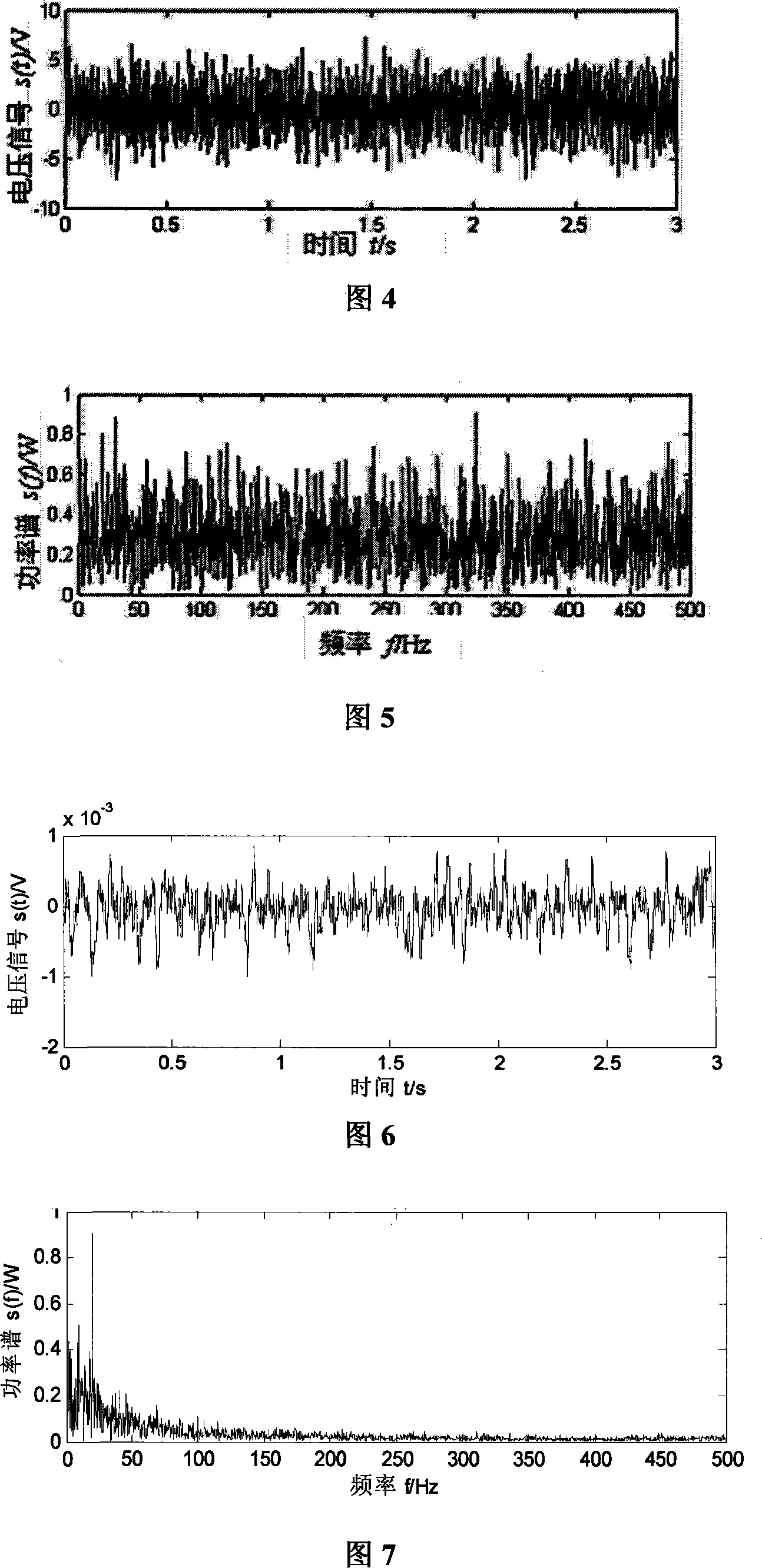Self-adapting random resonant weak signal detection method
A technology of weak signal detection and stochastic resonance, which is applied in the direction of measuring devices, measuring electrical variables, instruments, etc.
- Summary
- Abstract
- Description
- Claims
- Application Information
AI Technical Summary
Problems solved by technology
Method used
Image
Examples
Embodiment Construction
[0028] The self-adaptive stochastic resonance weak signal detection method of the present invention uses the method of combining the best matching stochastic resonance and the stochastic resonance induced by an external signal to realize the self-adaptive detection of the weak characteristic frequency signal. The steps are as follows:
[0029] 1. According to the stochastic resonance theory of the bistable system, the numerical simulation is carried out to obtain the corresponding relationship between the noise intensity and the frequency of the bistable system best matching stochastic resonance under the condition of small signal in the extremely low frequency range.
[0030] The nonlinear bistable system driven by periodic signal and white noise essentially describes the movement of a particle in a symmetrical double potential well when it is driven by external force and noise at the same time.
[0031] A bistable system can be described by the Langevin equation:
[0032] ...
PUM
 Login to View More
Login to View More Abstract
Description
Claims
Application Information
 Login to View More
Login to View More - R&D
- Intellectual Property
- Life Sciences
- Materials
- Tech Scout
- Unparalleled Data Quality
- Higher Quality Content
- 60% Fewer Hallucinations
Browse by: Latest US Patents, China's latest patents, Technical Efficacy Thesaurus, Application Domain, Technology Topic, Popular Technical Reports.
© 2025 PatSnap. All rights reserved.Legal|Privacy policy|Modern Slavery Act Transparency Statement|Sitemap|About US| Contact US: help@patsnap.com



